
How to Choose Patio Awnings?
March 1, 2021
Pros and Cons of Home Roller Blind Installations
April 9, 2021How To Remove An Awning?

Are you wondering, how to remove an awning? An Awning is an investment to protect. Awnings are engineered and designed to cover and removed safely during an emergency. Awnings can be conveniently removed post a storm.
They can be restored easily to their initial positions. When a hurricane or emergency is approaching at short notice, you will need to remove awning cover appropriately without damaging them.
The majority of local construction codes state that awning should be eliminated when the wind is over 74 mph. However, it is better to remove this wind strength.
What are Awnings?

An awning is a canvas sheet or any other material that is stretched over a frame. This keeps the rain or sun off the window, deck, or doorway. They keep your home or shop or office cool during hot summers.
How frequently they should be removed and cleaned?
Business owners or homeowners may want to remove their awnings in the following situations:
Cold weather

Homeowners or business owners have to remove when it’s getting colder or when it is getting windy. If you do not remove them in colder seasons or windy, they are likely to get damaged, the frame can get bent, degrade or result in fabric rot.
Storm or windy-
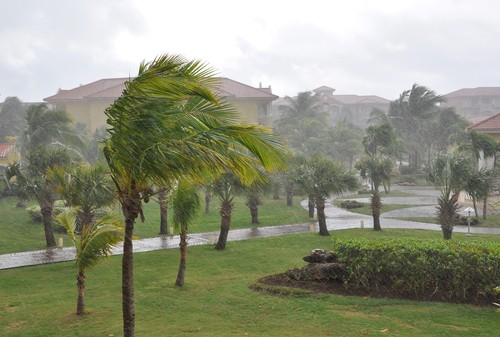
Whenever there are major storms in your area or close by, you will need to remove them. Winds over 74 mph are a warning to remove them to keep them safe.
For cleaning-
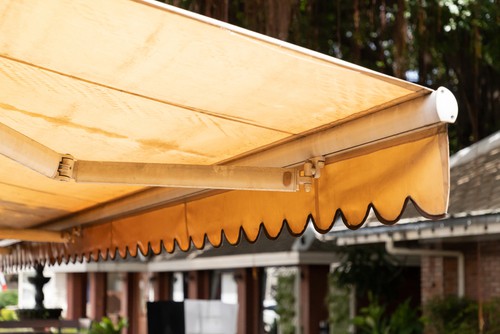
Other than this, owners can remove them when they want to clean their awnings. Though you can do cleaning even without removing them, it is better to clean them after removing them from their frame to do it safely.
This way you can clean it properly without any damage to the awning. It is best to clean them for at least 2 months to 6 months.
How To Remove A Awning?
When you want to remove an awning, there are two primary ways to do so, from a fixed frame and other retractable settings.
Fixed Awnings

- Loosen and untie the wing laces.
- The awning front part is unlaced.
- The Velcro sleeves are made loose and even the head rod.
- The head rod is placed back to the track and then hand-tight the securing nuts.
- Fold the awning fabric and store it.
Retractable Awning
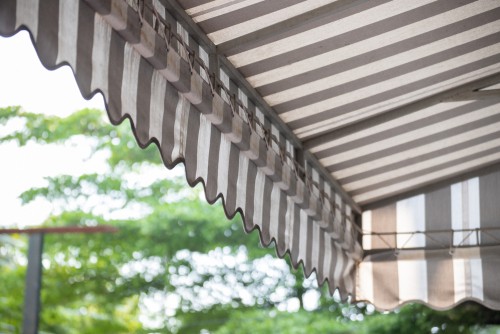
- Retract the frame of an awning and the end covers are removed.
- The stop clamps are loosened and the awning valance is removed.
- Secure the arms and fabric should be unrolled.
- The stop clamp is removed from the front bar.
- Now pull through the fabric.
Step by Step Guide to Remove an Awning
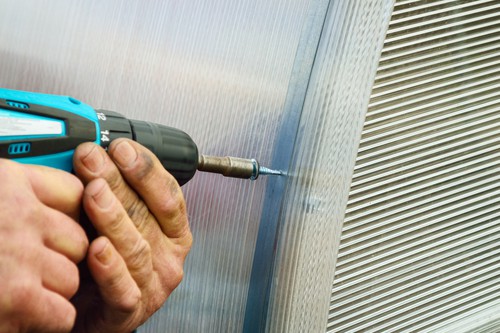
To remove the awning, follow these steps to make it easy for you:
- Make use of a knife of cutting pliers to cautiously cut or untie the rafter ropes, front bars, and wings.
- Once the ropes are cut, remove the cover from both the corners of the frame. You can either push the cover back or roll the cover. You can push back to the frame head and against the wall.
- The entire awning can be slid off the track to one of either side. When the track is crimped to either of the ends, insert a screwdriver cautiously in the track end. This will let the awning move in the track. Now gradually pry it open and gently create a bigger opening.
- Now with moderate tension, you can continue or start sliding the awning for its track. Remedy when you identify any issue like awning getting stuck or not moving further.
You can take the help of another person to follow the movement of the awning as it is stretching towards you. When you roll the awning tightly, the process becomes easier for you. - To avoid any damage, ensure not to drag or not to fold the awning on the rougher edges or surfaces.
- Ensure to eliminate any debris when removing or rolling from the awning. Let the awning dry before storing or folding it.
- Tag the rolled awning to not to get confused or getting it mixed with other awnings.
Conclusion
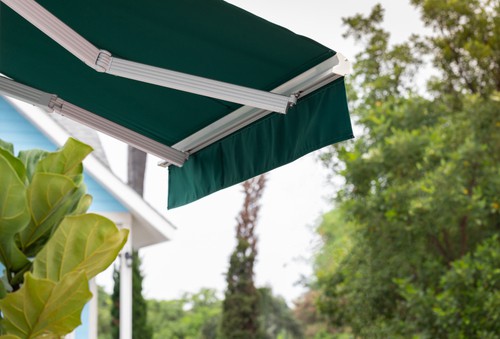
So, if it’s going to get windy or stormy or you just want to clean up your awning, then by understanding how to remove the awning the right way will be of great help. This way you can protect the awning that protects you from the heat without any fabric rot or other damage.
Contact professionals in Singapore, if you have any difficulties getting your awning on or off track.



